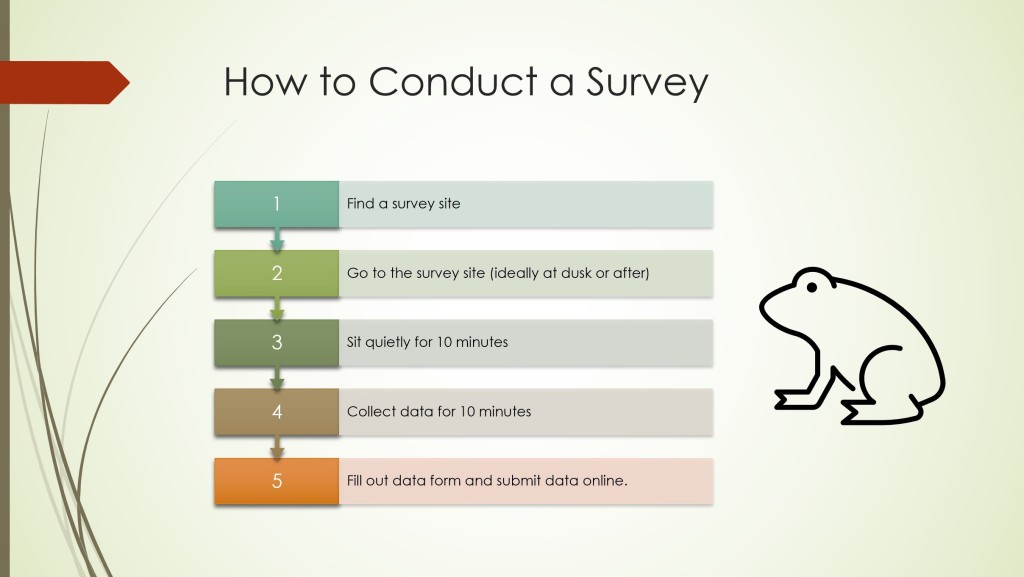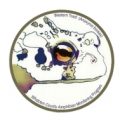
American Bullfrog 
Green Frog
Whatcom County is a wonderful place for amphibians, but unfortunately, that has also made it a great home for two invasive amphibian species. The American Bullfrog and the Green Frog are both native to the eastern United States and were introduced through a variety of ways, including farming for frog legs, the pet trade, and as additions to ornamental ponds. They have also been migrating from British Columbia, where they are very well-established.
Why do we care about about the presence of invasive American Bullfrogs and Green Frogs in Whatcom County? American Bullfrogs and Green Frogs can compete with our native species of amphibians and have been implicated in the decline of some native species. They also consume wildlife species other than amphibians.
Although we know American Bullfrogs are widespread in our county, we don’t have documentation of exactly where they are, and maybe more importantly, where they are not. Whatcom County is the only place in Washington State where Green Frogs have become well established. The Washington State Department of Fish and Wildlife has no real documentation of their presence and extent. It is important that this species be documented to see how it affects our native species and if control is necessary. We hope that we can use Citizen Scientists to expand that data on these species and you can help!
This summer, WCAMP is conducting call surveys for American Bullfrogs and Green Frogs from mid June through August! We have various sound clips of Bullfrog and Green Frog calls set up to listen to so you can get to know their calls, as well as to test out your identification skills.
Its easy to do these surveys. You get to pick your survey site. It could be a local pond in your neighborhood, a park or you might want to make a picnic of it and head out to the county. The best survey sites are near permanent water. That means water that is present all year. This could be a natural wetland, pond, lake or stream or it could be artificial like a stormwater detention pond or landscape feature.
The above map shows the current documentations of American Bullfrog and Green Frog in Whatcom County based on our records. Blue pins show bullfrog records/green pins Green Frog records/purple indicate both are present at that site. Updated 6/24/21
Read on to find out how fun and simple this is to do:

Step 1. Pick a survey site. Where should you survey? You should find a survey site that is near (100′ or closer) a fresh water habitat. This could be a pond, lake, stream, river, wetland or stormwater facility. This could be on your own land or find some public land or you can count from roads if you find a safe place to do it. Please do not trespass!
Step 2. On a warm evening when the wind it quiet go to your selected survey site. To have the most success with your survey pick an evening (dusk and after) that is warm (60F or greater) and no or very light wind. You can do surveys at other times of day, but you will have the most success in the evening (you might want to put some insect repellent on).
Step 3. You should arrive at your survey location and remain still and quiet for 10 minutes. After the 10 Minute wait period begin timing a survey period of 10 minutes and listen for any frog calls. Note the air temperature, time of day you are surveying, wind speed and put it on your datasheet. Print a data sheet to take with you to record your data during survey (Data Sheet ).
Step 5. Finished up your datasheet and input your data on our website. Please record your American Bullfrog and Green Frog data on our online data form (Call Survey Online Data Input ) when you get home or on your phone while you are in the field.
We would like you to visit your survey sites up to 3 times throughout the season, similar to the egg mass surveys. Once both Green Frog and American Bullfrog presence is detected at a survey site, the survey for that site is complete! Surveys can be conducted any time, but the frogs call more actively after sunset. More specific instructions on conducting call surveys are provided below.
Surveying with a partner (socially distanced if not residing in the same house) is recommended for safety, but can be done individually.
Volunteer Information:
The resources below will prepare and provide you with the information necessary to conduct surveys. You too can be a master frog surveyor!
How to identify calls? Learn to identify the different calls made by American Bullfrogs and Green Frogs through various sound clips and videos.
Amphibian habitats Learn to distinguish the different types of habitats utilized by amphibians.
Quiz yourself! Think you know your calls? Test your skills with this mini quiz.
Call Survey Procedures Once you’ve chosen a survey site, collect data following these instructions on how to conduct call surveys. Click here for a printable copy of instructions.
Data Sheet Print a data sheet to take with you to record your data during survey.
Call Survey Online Data Input Please record your American Bullfrog and Green Frog data on our online data form.

FYI, I found the bullfrog at Lake Louise in June, 2015. See https://www.inaturalist.org/observations/1607894 for documentation.
LikeLike
Thank you. We will get that logged!
LikeLike
I nearly stepped on a bullfrog today at the Whatcom Humane Society property while walking a dog on the trail near a drainage ditch. This is quite close to one of your sampling sites. That site, a stormwater retention pond, was recently dredged. As water slowly refills the pond, I assume that bullfrogs will follow.
LikeLiked by 1 person
Thank you. We will get that logged.
LikeLike
Is there anything going on with this survey in summer of 2021?
LikeLike
Yes, we are doing this summer. We are having a training on June 11th at 6 pm at Tennant Lake if you are interested.
LikeLike
Squires Lake and the Beaver pond associated with it are full of Bull Frogs
LikeLike
Thank you. We do have those im the database- plus a recorder there! Thanks for the observations.
LikeLike
Found a very large yellow-ish tan bullfrog sitting in the street last night on Pacific Heights Drive in Ferndale, a few houses north of Thornton. Guessing he came from the retention pond further up the street. Could hear another frog croaking in a yard across the street from the retention pond. The retention ponds further north in Pacific Highlands also seem to have a lot of loud bullfrogs.
LikeLike
Thank you for that information. Did you by chance get a photo?
LikeLike
Sorry, I didn’t. It was dark out. It was very fat/bulbous, especially in the belly, took up a spot on the pavement about 4″ wide x 5″ long, rear toes were long and webbed. Could only see it from the front, didn’t notice any green, more tan/yellowish, light colored chest. Couldn’t see color or markings on its back. Skin looked smooth and wet. I drove past it sitting a few feet into the road from parked cars. I backed up to make sure I wasn’t seeing things, and it didn’t move or make any noise. I went home and walked back with a flashlight and found it had moved under one of the cars. It just sat there and looked back at us. Did not appear injured. It was about 100 yards from a retention pond after a rainy day. After looking at a lot of WA frog/toad pics on google, I’m questioning whether it was a bullfrog after all. Coloring and shape looked more like a Columbia Spotted Frog (or maybe a Western Toad.)
LikeLike
No problem. It was most likely a bullfrog. Oregon Spotted Frogs rarely leave the water and are much smaller. Toads are usually very dark colored . Thanks for noticing.
LikeLike
I think I found a green frog in my yard in Custer WA I have a picture
LikeLike
We moved to Bellingham recently and enjoyed the goofy, if not downright weird sounds of the frogs in our neighborhood water retention pond connected to the King Mountain Village off of Winslow Court. According to the information you have provided the pond is full of American Bullfrogs. They sound exactly as the provided recordings (Jug-o-rum) and when frightened, they squeal or squeak. They are at least 8 inches, but are difficult to see and they are quick to hide. We hardly hear them anymore, but last month they were very vocal, particularly in the mornings.
LikeLike
Thank you for the report. We will log your observations
LikeLike